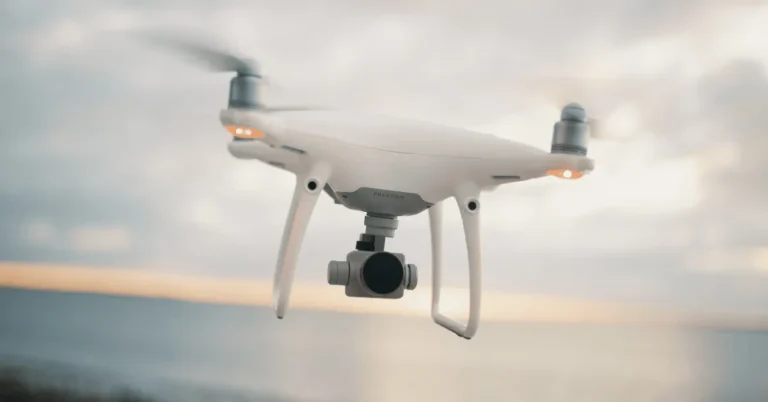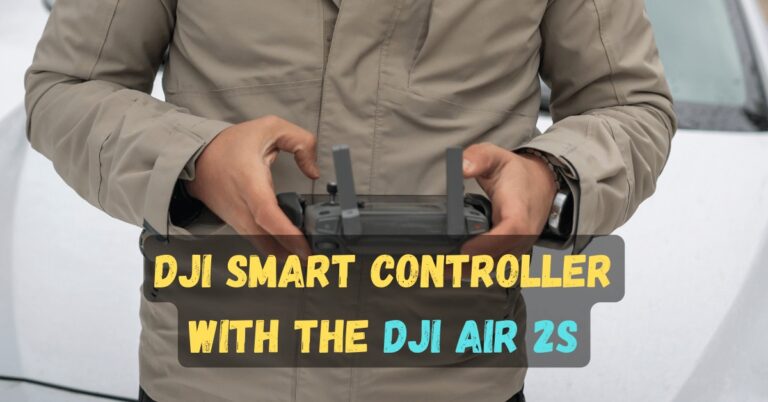What Type of RDR is Going to be Equipped on a Drone?

Radar systems, commonly referred to as RDR, are critical technologies that have significantly advanced over the years.
These systems are designed to detect and track objects by emitting radio waves and analyzing the signals that bounce back from those objects.
The fundamental principle of radar technology involves sending out a signal and measuring the time it takes for the signal to return after hitting an object.
This time delay allows the radar system to calculate the distance, speed, and even the shape of the object.
In the realm of drone technology, radar systems have become increasingly important. With the advent of sophisticated drones, there is a growing need for reliable systems that can enhance navigation, avoid obstacles, and conduct surveillance effectively.
Radar systems provide a robust solution to these requirements by offering precise detection and tracking capabilities.
Unlike visual or infrared sensors, radar can operate effectively in various environmental conditions, including low visibility scenarios such as fog, rain, and darkness.
The integration of radar systems in drones opens up numerous applications. For instance, in navigation, radar helps drones map their surroundings, ensuring they can traverse complex environments without human intervention.
Obstacle avoidance is another critical application; radar systems enable drones to detect and steer clear of potential hazards in real-time, making them safer and more reliable.
Furthermore, in surveillance operations, radar-equipped drones can monitor large areas, identifying and tracking objects of interest with high accuracy.
As we delve deeper into the types of radar systems that can be equipped on drones, it is essential to understand the foundational role these systems play in enhancing drone capabilities.
From improving safety and efficiency to expanding operational possibilities, radar technology is integral to the future of drone applications.
The subsequent sections will explore specific radar types and their unique advantages, providing a comprehensive understanding of how radar systems are revolutionizing drone technology.
Intrigued by Where Are Autel Drones Made? Learn more about Autel’s manufacturing process here!
Types of Radar Systems Suitable for Drones
Integrating radar systems into drones enhances their capabilities, providing them with advanced sensing and navigational features.
Among the radar technologies suitable for drones, Synthetic Aperture Radar (SAR), Frequency Modulated Continuous Wave (FMCW) radar, and Doppler radar stand out due to their unique attributes and applications.
Synthetic Aperture Radar (SAR) is a form of radar that generates high-resolution images by using the motion of the drone to simulate a large antenna aperture.
This technology is particularly advantageous for mapping and surveillance, as it can produce detailed images regardless of weather conditions or light levels.
SAR’s ability to penetrate through foliage and other obstacles makes it ideal for applications in agriculture, forestry, and disaster management.
However, SAR systems tend to be more complex and require significant processing power, which can be a consideration for drone integration.
Frequency Modulated Continuous Wave (FMCW) radar operates by emitting a continuous signal that varies in frequency over time.
This type of radar is known for its high range resolution and the ability to detect and track moving targets.
FMCW radar is beneficial for collision avoidance, navigation, and terrain mapping. Its relatively low power consumption and compact size make it well-suited for drones, particularly those with stringent payload and energy requirements.
Additionally, FMCW radar systems are less susceptible to interference, enhancing their reliability in congested electromagnetic environments.
Doppler radar utilizes the Doppler effect to measure the velocity of objects relative to the drone.
This radar type is effective in detecting the speed and direction of moving targets, making it highly useful for applications such as traffic monitoring, search and rescue, and wildlife tracking.
Doppler radar systems are typically lightweight and consume moderate power, balancing performance with the constraints of drone platforms.
When comparing these radar systems, it is essential to consider their size, weight, power consumption, and performance characteristics. SAR systems, while powerful and versatile, may be more suitable for larger drones with higher payload capacities.
In contrast, FMCW and Doppler radar systems offer a good balance between performance and integration feasibility, making them ideal for a wide range of drone applications.
Ultimately, the choice of radar system will depend on the specific requirements and operational goals of the drone mission.
Curious about a Shahed drone’s endurance? Look no further! Let’s explore how long these UAVs can stay airborne.
Key Considerations for Equipping Drones with Radar Systems
When selecting radar systems for drones, several critical factors must be meticulously evaluated to ensure optimal performance and integration.
One of the foremost considerations is the Size, Weight, and Power (SWaP) constraints. Drones, often limited in payload capacity, necessitate the use of radar systems that are lightweight, compact, and energy-efficient.
This ensures that the radar does not adversely affect the drone’s flight dynamics or endurance.
Integration challenges also play a crucial role. Adding radar technology to drones involves complex engineering to seamlessly incorporate the hardware and software without compromising the drone’s primary functions.
This includes ensuring that the radar’s electromagnetic emissions do not interfere with other onboard systems, and that the data processing capabilities are adequate to handle the radar’s output in real-time.
Cost is another significant factor. The budget constraints of a project can dictate the type of radar system that can be employed.
High-performance radars with advanced features may offer superior capabilities but come at a premium.
Therefore, a careful cost-benefit analysis is essential to determine the most suitable radar system that meets the operational requirements without exceeding financial limitations.
Reliability and environmental factors also significantly influence the selection of radar systems for drones.
The radar must be robust enough to operate reliably under various weather conditions, such as rain, fog, and high winds, which can affect radar performance.
Additionally, the durability of the radar system to withstand physical shocks and vibrations during flight is paramount.
These considerations collectively impact the selection and implementation of specific radar systems for drones.
By carefully evaluating SWaP constraints, integration challenges, cost, reliability, and environmental factors, one can ensure that the chosen radar system enhances the drone’s capabilities without introducing new limitations.
Curious about what kind of drone protection equipment is available on the public market? We’ve got you covered! Read on to learn more.
Future Trends and Innovations in Drone Radar Technology
The landscape of drone radar technology is rapidly evolving, driven by continuous advancements and pioneering innovations.
One of the most significant trends is the development of miniaturized radar systems. These compact systems are designed to fit the limited space and weight constraints of drones, without compromising on performance.
Miniaturization is enabling drones to operate with greater agility and efficiency, making them more suitable for a wider range of applications, from commercial delivery to surveillance.
Another groundbreaking advancement is the integration of artificial intelligence (AI) into radar processing.
AI-enhanced radar systems can process data more quickly and accurately, enabling real-time decision-making and improved obstacle detection and avoidance.
These smart systems can learn and adapt to various environments, significantly enhancing the operational capabilities of drones in dynamic and complex scenarios.
Multi-sensor fusion is also emerging as a key innovation in drone radar technology. This approach combines radar with other sensing technologies, such as LiDAR, infrared, and optical cameras, to create a more comprehensive and reliable sensing system.
By leveraging the strengths of different sensors, multi-sensor fusion can provide better situational awareness and more accurate object detection and classification.
This has profound implications for applications like autonomous navigation, search and rescue missions, and environmental monitoring.
Future applications of these innovations are vast and varied. Enhanced radar-equipped drones could revolutionize industries such as agriculture, where precise monitoring of crop health and soil conditions is crucial.
In the field of logistics, drones with advanced radar systems could ensure safer and more efficient delivery operations.
Moreover, in emergency response scenarios, the ability of drones to quickly and accurately map disaster-stricken areas can be life-saving.
Ongoing research and development efforts are continuously pushing the boundaries of what is possible with drone radar technology.
Researchers are focused on overcoming current limitations, such as radar signal interference and power consumption, to further enhance the performance and reliability of radar-equipped drones.
As these technologies mature, they promise to unlock new capabilities and expand the potential use cases of drones across various industries.







